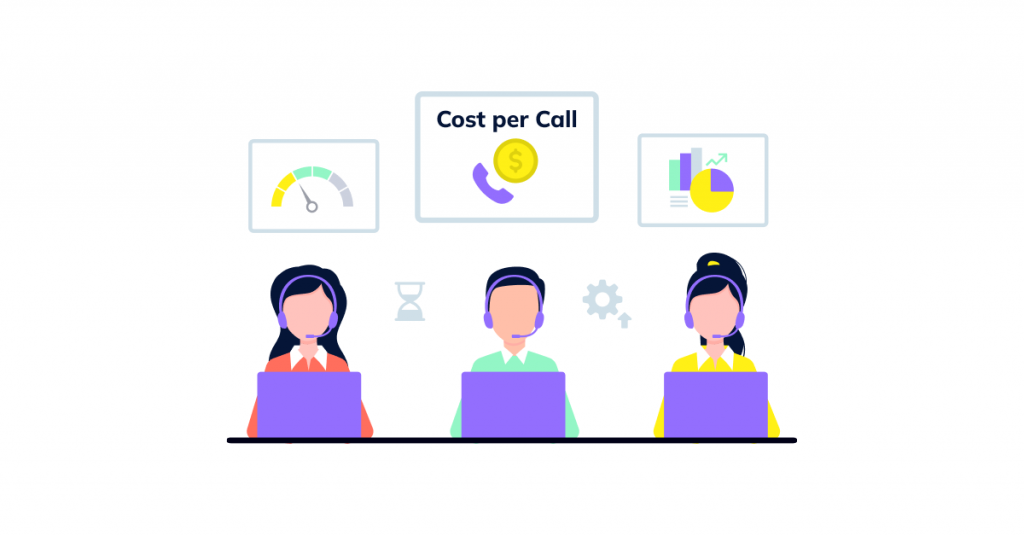Pay-per-call campaigns have become an increasingly popular way for affiliates to generate leads and revenue. However, understanding and managing the costs associated with these campaigns is crucial for maximizing profitability. In this article, we’ll explore the average costs involved in pay-per-call campaigns, effective cost management strategies, and how to optimize your efforts through revJOLT Network.
Understanding the Costs of Pay-Per-Call Campaigns
Average Costs Associated with Pay-Per-Call
Pay-per-call campaigns involve several key costs that affiliates should consider:
- Cost Per Call (CPC): This is the amount you pay for each call generated through your marketing efforts. Average CPCs can range from $5 to $50, depending on the niche and competition.
- Advertising Costs: These include expenses related to paid advertising channels such as Google Ads, social media ads, or even influencer partnerships. Costs vary significantly based on your target audience and the platforms used.
- Lead Management Costs: If you’re using a lead management system to track and qualify calls, there may be associated fees. Some platforms charge monthly subscriptions, while others take a percentage of your earnings.
- Conversion Costs: These costs arise from the need to convert calls into sales. This may involve hiring sales staff, training, or using CRM systems, which can add to overall expenses.
Example: A Sample Pay-Per-Call Campaign Budget
Let’s consider a hypothetical campaign in the insurance niche:
- Cost Per Call: $20
- Number of Calls Expected: 100
- Total CPC Cost: $2,000
- Advertising Costs: $1,500 (Google Ads, Facebook Ads)
- Lead Management Costs: $300 (for a CRM system)
- Conversion Costs: $700 (training and salaries for sales staff)
Total Cost for the Campaign: $4,500
Understanding these average costs helps set a realistic budget for your campaigns.
Cost Management Strategies

Budgeting Effectively
Step 1: Set a Clear Budget
Start by defining your total budget for the campaign. Use the average costs outlined above to estimate your expenses. Make sure to include a buffer for unexpected costs.
Step 2: Track Spending
Utilize tools like spreadsheets or project management software to monitor your spending in real time. This will help you stay within budget and identify areas where you may be overspending.
Optimizing Advertising Spend
Step 3: Choose the Right Advertising Channels
Not all channels yield the same ROI. Analyze past performance to determine which platforms generate the highest-quality calls. For example, if Facebook ads provide better conversions than Google Ads for your niche, allocate more budget to that platform.
Step 4: A/B Testing
Run A/B tests on your ad creatives and targeting to identify the most cost-effective strategies. For instance, if you’re promoting an insurance product, test different headlines or images to see what drives more calls without significantly increasing costs.
Improving Lead Management
Step 5: Use Lead Qualification
Implement lead qualification processes to filter out low-quality leads. This can involve setting specific criteria for what constitutes a “good” call (e.g., minimum duration, relevant questions asked). By ensuring only high-quality leads are passed to your sales team, you can improve conversion rates and reduce wasted spending.
Step 6: Invest in Technology
Consider investing in technology that can automate lead management and tracking. Tools like revJOLT provide comprehensive solutions that help manage costs effectively while maximizing lead quality.
Focusing on Conversion
Step 7: Train Your Team
Invest in training your sales team to ensure they can effectively convert leads into sales. Better-trained staff can lead to higher conversion rates, reducing overall costs per sale.
Step 8: Use Performance Metrics
Monitor performance metrics regularly to identify trends. Track metrics such as call duration, conversion rates, and average deal size. This data can inform adjustments to your strategies and lead to improved cost efficiency.
Real-World Example: A Successful Pay-Per-Call Campaign
Background
As a veteran affiliate, I once ran a successful pay-per-call campaign for a home security system. Here’s a breakdown of how I managed costs effectively:
Campaign Setup
- Defining the Budget: I set a budget of $5,000 for a two-month campaign. This included all costs associated with calls, advertising, and management.
- Choosing Advertising Channels: Based on previous experience, I allocated 70% of my budget to Google Ads and 30% to Facebook Ads, targeting homeowners in urban areas.
- A/B Testing: I tested different ad copies and visuals. The version with a compelling testimonial generated 30% more calls at a lower CPC.
Lead Management
- Implementing Lead Qualification: I used a CRM system to pre-qualify leads based on criteria like homeowner status and interest level. This ensured my sales team received high-quality leads.
- Investing in Technology: I utilized revJOLT’s lead management platform to automate tracking and reporting, which saved time and reduced errors.
Conversion Improvement
- Training the Sales Team: I invested in a two-day training session for my sales team to improve their pitch and objection-handling skills. This led to a noticeable uptick in conversion rates.
- Monitoring Metrics: I tracked key performance indicators weekly, making adjustments to my strategies based on data insights. For instance, I discovered that calls lasting over three minutes had a higher conversion rate, prompting me to adjust my targeting accordingly.
Results
After two months, I achieved:
- Total Calls Generated: 300
- Total Conversions: 90 (30% conversion rate)
- Total Revenue: $18,000 (average sale of $200)
- Total Campaign Cost: $4,800
Net Profit: $13,200
By effectively managing costs and optimizing every stage of the campaign, I not only met but exceeded my initial revenue goals.
Signing Up for revJOLT Network
If you’re looking to optimize your pay-per-call campaigns and effectively manage costs, consider joining revJOLT Network. Here’s how to get started:
Step 1: Visit the revJOLT Website
Go to the revJOLT Network homepage and explore the benefits they offer for affiliates, including a wide range of offers, comprehensive tracking tools, and lead management solutions.
Step 2: Create an Account
Sign up for an account by filling out the registration form. Ensure you provide accurate information to facilitate a smooth onboarding process.
Step 3: Explore Offers
Once your account is set up, browse the available offers that align with your niche. Look for high-payout offers that fit well with your target audience.
Step 4: Utilize Training Resources
Take advantage of the training resources and support available through revJOLT. This can include webinars, case studies, and tutorials on optimizing your pay-per-call campaigns.
Step 5: Implement Tracking Tools
Use revJOLT’s tracking and reporting tools to monitor your campaigns in real time. This will help you identify areas for improvement and ensure you’re staying within budget.
Step 6: Scale Your Campaigns
As you gain experience and success with your initial campaigns, consider scaling your efforts. With revJOLT’s support, you can expand into new verticals or increase your ad spend to generate even more leads.
Conclusion
Managing costs effectively in pay-per-call campaigns is crucial for maximizing profitability. By understanding the average costs involved, implementing strategic budget management, and utilizing tools like revJOLT Network, affiliates can optimize their campaigns for success. With careful planning and execution, you can achieve impressive returns on your investment and build a sustainable affiliate marketing business.


